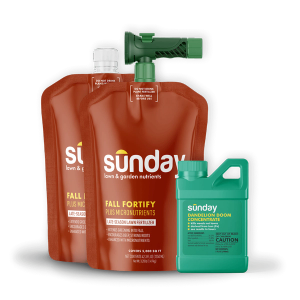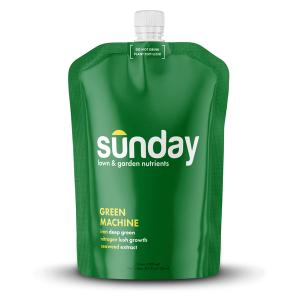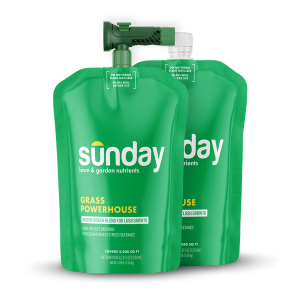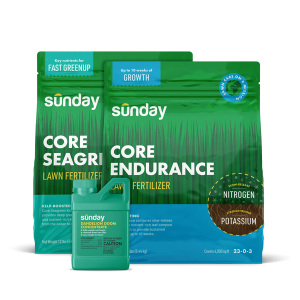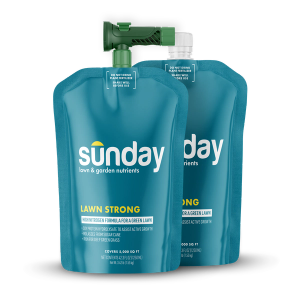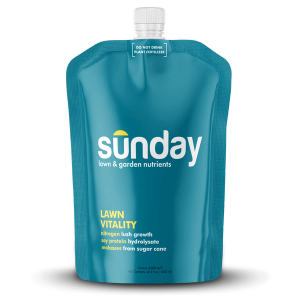As summer’s heat gives way to cooler fall temperatures, your warm-season lawn isn't shutting down. It’s beginning a crucial transition into winter dormancy, and the care you provide now will determine how quickly and strongly it returns next spring.
Unlike cool-season grasses that are actively growing, your warm-season lawn is in preparation mode. This fall checklist focuses on two key actions: providing a final feeding and clearing out weeds before the plant goes to sleep for the winter.
Sunday Tip:
Need a fall plan tailored to your yard? Ask Sunny to check your location and grass type to create a personalized fall checklist for you.
See exactly how to prepare your warm-season lawn for the dormant season in our new video.
Your fall checklist for warm-season lawns
The goal is simple: help your lawn store enough energy to survive the cold, and wake up healthier (and with fewer weeds).
1. The final feed before winter (aka fertilizing)
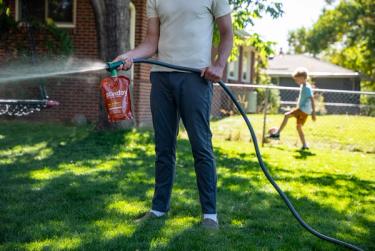
The timing of your final fall fertilizer application is critical for warm-season grass. You want to feed the lawn while it's still active enough to store the nutrients in its roots, rhizomes, and stolons, but not so late that you encourage a flush of new growth that the first frost will damage. This final fertilization is its energy reserve for winter.
- What to use: A fall fertilizer like Fall Fortify Plus Micronutrients provides the essential nitrogen your lawn needs to build these energy stores without the unnecessary phosphorus or potassium.
- When to apply: Aim to fertilize from mid-August to late September. For your specific application window, you can check My Plan or simply Ask Sunny, "What is my next application date?"
Sunday Tip:
Heads up! The warm-season fertilizer application window is earlier and shorter. Aim to fertilize from mid-August to late September, at least 6-8 weeks before your average first frost date.
2. The pre-dormancy weed purge
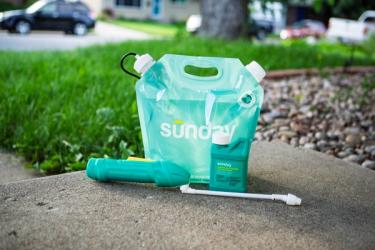
Fall is your strategic advantage against winter annuals and perennial spring weeds. As your warm-season grass slows its growth, opportunistic cool-season weeds (like annual bluegrass and henbit) will try to move in. Eliminating them now, before your lawn goes fully dormant and loses its ability to compete, is far easier than fighting an established invasion in the spring.
- What to use: Spot treat pesky broadleaf weeds with Dandelion Doom or use Weed Warrior for weeds in non-lawn areas. Hand-pull any annuals creeping into the lawn, too.
- Why it matters: A weed-free lawn heading into dormancy means your grass will have primary access to water and nutrients when it wakes up in the spring.
The most important task: what
While cool-season lawns are being heavily overseeded, the single most important rule for warm-season lawns in the fall is to avoid overseeding.
Planting warm-season grass requires significant warmth and a long growing season to establish a mature root system. Planting grass seed in the fall will result in weak seedlings that cannot survive the winter, wasting your time and money. For this task, wait until late spring or early summer.
Sunday Tip:
Fell behind this summer? Ask Sunny, "Did I miss any applications?" and it can help you create a smart catch-up plan for the fall.
Your warm-season winter prep kit
Get your lawn ready for a healthy dormancy with these fall essentials.
- For fertilizing: Fall Fortify Plus Micronutrients
- For weeding: Dandelion Doom Starter Kit, Weed Warrior Starter Kit plus refill packs, too!
Giving your warm-season lawn this targeted care makes sure it has everything it needs to bounce back beautifully in spring—and Sunny can help create the perfect prep plan for your specific yard.

Let's get growing
Our lawn engine uses satellite data to map out your lawn size and determine things like average rainfall, common weeds, and pest activity.







